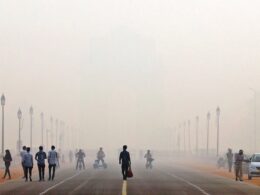It has been a year of colossal efforts in global health.
Countries battled COVID-19, which claimed more lives in 2021 than in 2020, while struggling to keep other health services running.
Health and care workers have borne the lion’s share of these efforts but often received little recognition or reward.
Life-saving COVID-19 vaccines, tests and treatments were rolled out, but overwhelmingly in the richest countries, leaving many populations unprotected, especially in lower-income countries.
Across other health areas, from diabetes to dementia, there have been both setbacks and hard-won successes.
Here are 10 global highlights from 2021, including a few issues you might have missed:
Table Of Contents (TOC)
- Innovation and inequities in the COVID-19 response
- Emergencies emerge and persist
- Tackling health service challenges
- Greater contributions by — and challenges for — women
- Health argument for climate action
- A stronger WHO
Box
- Malaria vaccine a beacon of hope in the fight against a range of infectious diseases
- New boost to the fight against diabetes
- Tobacco use fell
- WHO signals alarm about dementia challenge
Innovation and inequities in the COVID-19 response
Inequities in access to health tools came into even sharper focus this year.
Over 8 billion COVID-19 vaccine doses have been administered worldwide but by the end of November, only 1 in 4 African health workers were fully vaccinated. A mere 0.4% of tests globally have been carried out in low-income countries.
Driving efforts to end the COVID-19 pandemic, WHO has led the charge for equity. We have set global vaccination targets and emphasized that the priority in every country, and globally, should be protecting those most at-risk, such as health workers and older people. As of 20 December 2021, we have validated 10 COVID-19 vaccines as safe, effective and high-quality and continually updated our therapeutics guidelines, reflecting the very latest clinical insights.
Collaboration is key to WHO’s COVID-19 response. The world’s best scientific brains came together to ask and answer the critical research questions needed to tackle COVID-19 under WHO’s Research and Development Blueprint. The ACT-Accelerator halved the cost of COVID-19 rapid tests for low and lower-middle income countries and procured over 148 million tests. Its vaccines arm, COVAX, delivered over three quarters of a billion doses globally, despite substantial challenges, such as vaccine hoarding and insufficient transparency from manufacturers. Throughout this uncertain year, we partnered closely with countries on preparing for rollouts.
WHO also launched an mRNA technology transfer hub initiative and is supporting a South African manufacturer in bringing the knowhow, data and technology together to develop production capacity to serve the region.
Providing a great example of a transparent, global, non-exclusive agreement, the COVID-19 Technology Access Pool announced its first licence, which will allow all countries to manufacture a serological test developed by the Spanish National Research Council.
As our COVID-19 response continues apace, so do our preparedness efforts for future outbreaks. With Germany, we opened a Hub for Pandemic and Epidemic Intelligence in Berlin. With Switzerland, we launched the first facility in our global BioHub system for rapidly and safely sharing pathogens, which will help assess risks and enhance global preparedness.
Globally, there have been over 100 Intra-Action Reviews by countries, who have used this tool to evaluate their COVID-19 responses and strengthen then in real time. In parallel, the pilot rollout of Universal Health and Preparedness Reviews has successfully recruited countries to learn from each other in assessing their readiness for the next pandemic while providing for and promoting the overall health of their populations.
© WHO / Blink Media — Mustafa Saeed
Mustafa Bashe, logistics assistant at the WHO warehouse, pulls an oxygen concentrator from the warehouse inventory for delivery to a local hospital on 19 January 2021 in Hargeisa.
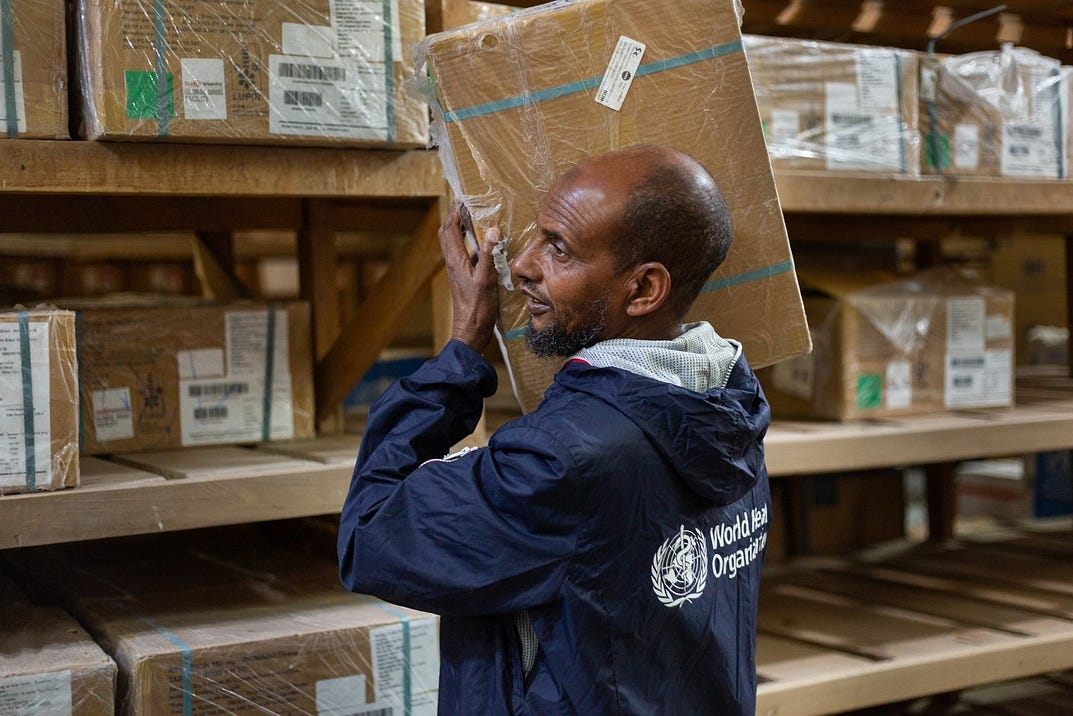
Emergencies emerge and persist
As the pandemic raged on, WHO and partners continued helping communities caught up in protracted humanitarian crises, such as those in Yemen and Syria, while responding to emerging ones in Afghanistan and Northern Ethiopia.
In Yemen, COVID-19 has further strained a health system already beset by conflict and other disease outbreaks, where only half of the country’s healthcare facilities are reported as functional. WHO has helped millions by supporting essential health services and therapeutic feeding centres to treat children with acute malnutrition. In response to the pandemic, WHO worked on the construction of oxygen production stations, capacity-building for health care workers, provision of medical and protective equipment and bolstering laboratory and testing capacity.
After more than a decade of crisis, needs in Syria are greater than ever. WHO stepped up with deliveries of medical supplies and by working with partners to provide mental health support.
Currently the world’s largest humanitarian emergency, Afghanistan is contending not only with COVID-19 but also acute watery diarrhoea, dengue, measles, polio and malaria. WHO has shipped over 414 metric tonnes of life-saving medical supplies since 15 August 2021, and, with partners, vaccinated 8.5 million children against polio through a November campaign.
Severe hardships — including a lack of fuel, food and medicine — also afflicted people in Northern Ethiopia. WHO provided over 367 metric tonnes of humanitarian cargo to Ethiopia to date, to provide relief to hundreds of thousands of families. Together with partners, we also launched a campaign to vaccinate 2 million people against cholera in Tigray region. We also supported mobile health and nutrition teams to deliver services to internally displaced people in conflict-affected Afar, Amhara and Tigray regions.
Tackling health service challenges
Once-in-a-generation crises have outsized ripple effects. The pandemic is likely to halt two decades of global progress towards universal health coverage (UHC), having triggered the worst economic crisis since the 1930s and badly disrupted health services.
According to new data launched this year, 23 million children missed out on routine vaccines in 2020, the largest number in over a decade — increasing risks from preventable diseases like measles and polio. Over half of the countries WHO surveyed between June and October 2021 reported disruptions to services for diabetes, cancer screening and treatment, and hypertension management.
As we navigate these challenges, UHC remains WHO’s North Star. Yet even before COVID-19, the world was falling short of our target to see 1 billion more people benefiting from UHC, as half a billion people were pushed (or pushed still further) into extreme poverty because of payments they had to make for health care. The situation will only be worse as a result of the pandemic, so we must redouble our efforts and make ‘Health For All’ the rallying cry of the recovery.
COVID-19 has exposed the limits of the resilience of health systems, underscoring the need to build them up to better deliver on both universal health coverage and health security.
All countries should invest in primary health care, the health and care workforce, health infrastructure, medicines and other health products, and strengthening social protection mechanisms.
For its part, WHO is bolstering health services at this pivotal moment, for example, through our collaboration with partners on achieving the Immunization Agenda 2030 strategy. We are also facilitating big picture thinking on the way forward, by convening experts to look at how to fund health for all and ensure that medical breakthroughs serve the common good. Shortly after UHC Day, we marked the agreement of the Geneva Charter for Well-being, which signals the need for a paradigm shift towards prevention and equipping people to take control of their own health.
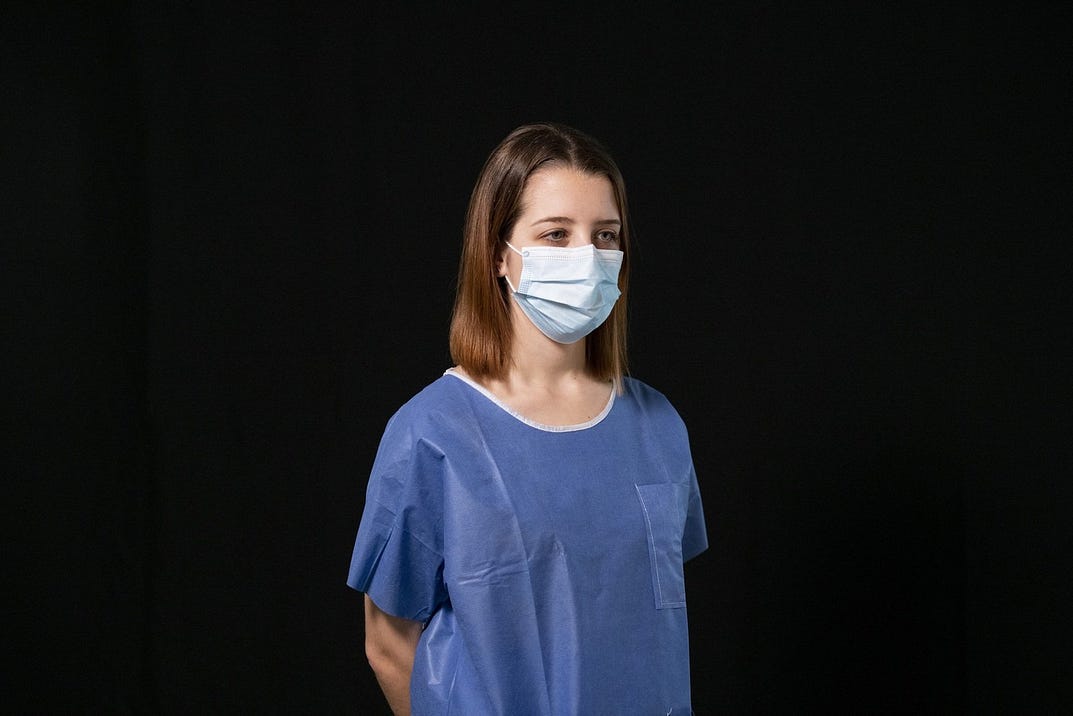
Greater contributions by — and challenges for — women
If health systems and services have weathered the storm of the past two years, it is in no small part due to the huge sacrifices of the women who represent 70% of the health and social workforce. WHO’s Year of Health and Care Workers campaign has called for protecting them and investing in their work environments and education; the WHO Academy represents a major investment in the latter area.
Women also played a leading role in driving scientific breakthroughs. WHO is committed to dismantling barriers to women’s participation in science, so more can participate in pushing the boundaries of knowledge and safeguarding public health. Committed to championing women as decision makers and leaders, we signed a MoU with the Women in Global Health network and made multiple commitments to women’s empowerment and equality at the Generation Equality Forum.
We have also moved to rectify past injustices, awarding a posthumous award to Henrietta Lacks, who in 1951 had tumour samples taken without her consent during her treatment for cervical cancer. Lacks’s life was cut short at the age of 31 but her legacy lives on. Her cells have contributed to nearly 75 000 studies, paving the way for advancements from HPV and polio vaccines to medications for HIV/AIDS and breakthroughs, including in vitro fertilization.
But women and girls are facing new or heightened health challenges, as the COVID-19 pandemic has exacerbated existing inequalities and disrupted access to vital health and support services.
The largest ever study on the prevalence of violence against women shows that almost 1 in 3 women globally have been subjected to physical or sexual violence by an intimate partner or sexual violence from a non-partner. Exposure to violence at home likely increased during the pandemic. WHO resources aim to help health workers better support survivors, while new research highlights the urgent need for policies that prioritize violence against women as a public health threat.
To address health challenges that particularly affect women, WHO is working to help countries eliminate cervical cancer, releasing new guidelines on cervical screenings and pushing for equity in access to vaccines, screening and treatment. We also launched a groundbreaking initiative to tackle breast cancer — aiming to significantly reduce deaths from the disease.
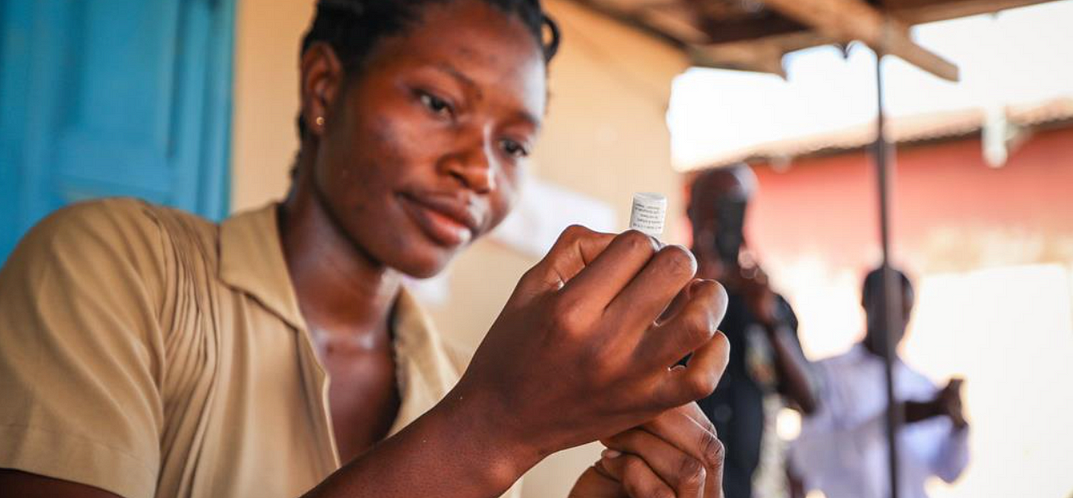
Health argument for climate action
Whether managing irreparable damage to someone’s memory or to our planet, WHO aims to rise to existential threats, from the personal to systemic.
Launched in September, WHO’s Global Air Quality Guidelines equipped the global community with clear evidence of the damage air pollution inflicts on human health, at even lower concentrations than previously known.
In the lead-up to the UN COP26 climate conference in Glasgow, WHO’s team lead on climate change, Dr Diarmid Campbell-Lendrum, cycled from Geneva to London — the first stretch in transporting two key documents to the global convening: WHO and partners’ ‘ Health Argument for climate action’ report and an open letter signed by organizations representing two-thirds of the global health workforce.
The Glasgow Climate Pact has left climate action at a critical point. It provides entry points on key issues such as financing as well as the fate of coal and fossil fuel subsidies — but they remain either unresolved or with caveats.
WHO will urgently work with partners to provide technical and financial support to the 50 countries that signed commitments to increase health sector resilience to climate change and reduce carbon emissions produced by the health sector.
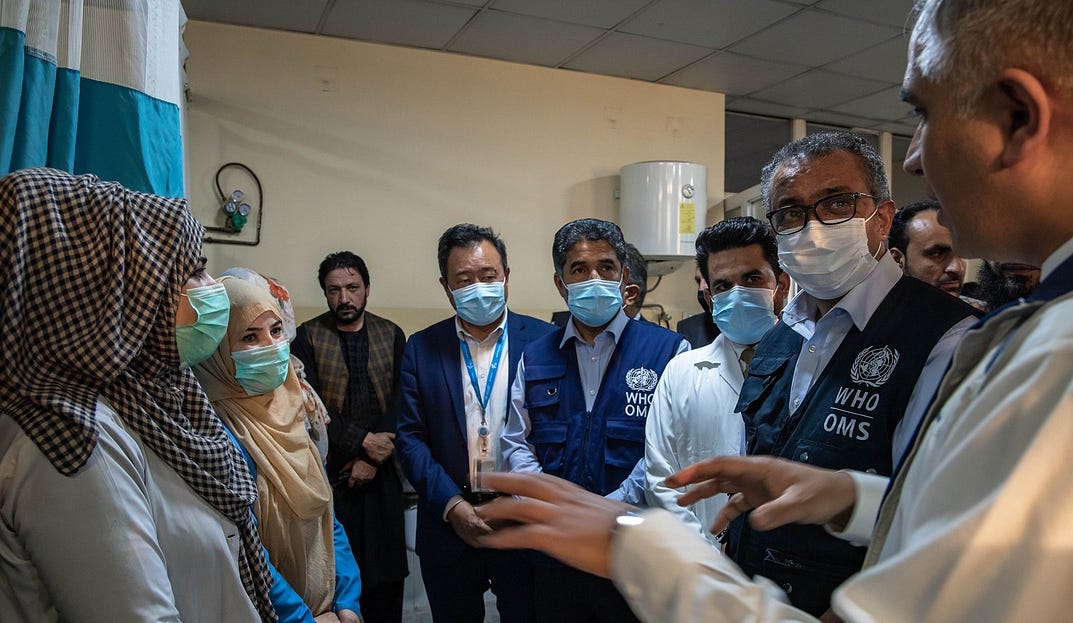
A stronger WHO
Increasing global health security requires strengthening, empowering and sustainably financing WHO at the centre of the global health architecture.
Two major developments closed out 2021. Countries made an historic decision to embark on the process of drafting and negotiating a new convention, agreement or other international instrument on pandemic prevention, preparedness and response, informed by an active working group of Member States. The spirit of solidarity underpinning this process will not only prevent and mitigate the impact of future pandemics, but end this one.
Composed of Member States, the Working Group on Sustainable Financing has been developing concrete recommendations towards more sustainable financing of WHO. Proposals for increasing the flexibility and predictability of funds were discussed, including considering a step change in assessed contributions, which are calculated based on each country’s GDP. Member States agreed that more time was needed to reach full consensus and their draft report will go to WHO’s Executive Board in January 2022.
In 2021, WHO also embarked on an urgent journey to strengthen safeguards against sexual exploitation and abuse in our work with communities and better protect our own staff against sexual harassment.
An important milestone was the publication of the Implementation Plan, which lays the foundation for zero tolerance for sexual exploitation, abuse and harassment — and for inaction against it. We are adopting a survivor-centred approach, ensuring all our personnel know and are accountable for upholding standards, and reforming structures, cultures and practice. This work is integral to our mission to promote health, keep the world safe and serve the vulnerable.
BOX
Malaria vaccine a beacon of hope in the fight against a range of infectious diseases
Just as health workers have been guiding lights in these difficult times, so has the transformative potential of science. WHO’s recommendation of the widespread use of a malaria vaccine for children at risk, particularly in sub-Saharan Africa, marked a milestone moment for child health and malaria control.
The recommendation was based on results from an ongoing pilot programme of the RTS,S vaccine in Ghana, Kenya and Malawi that has reached more than 800 000 children since 2019.
The vaccine has reinvigorated the fight against malaria, which claimed the lives of over 600 000 people in Africa in 2020. Children under the age of 5 represented 80% of these deaths. Even before the pandemic struck, there were signs that after years of phenomenal gains, progress was stalling.
Other major achievements relating to immunization include the introduction of a licensed Ebola vaccine and launch of a landmark new global plan to tackle meningitis.
Meanwhile, we released new evidence that more countries are following WHO’s advice on the steps to take when HIV drug resistance reaches critical thresholds. This is an important step forward in the global fight against antimicrobial resistance, about which WHO continues to raise the alarm, calling for action on innovation and within the food system.
© WHO / Fanjan Combrink
Following health workers at clinic near Cape Coast, Ghana as they prep for a community outreach in the village
© WHO / Patrick Brown
Sip, a young boy with diabetes is preparing for school with his mother, on the outskirts of Bangkok.
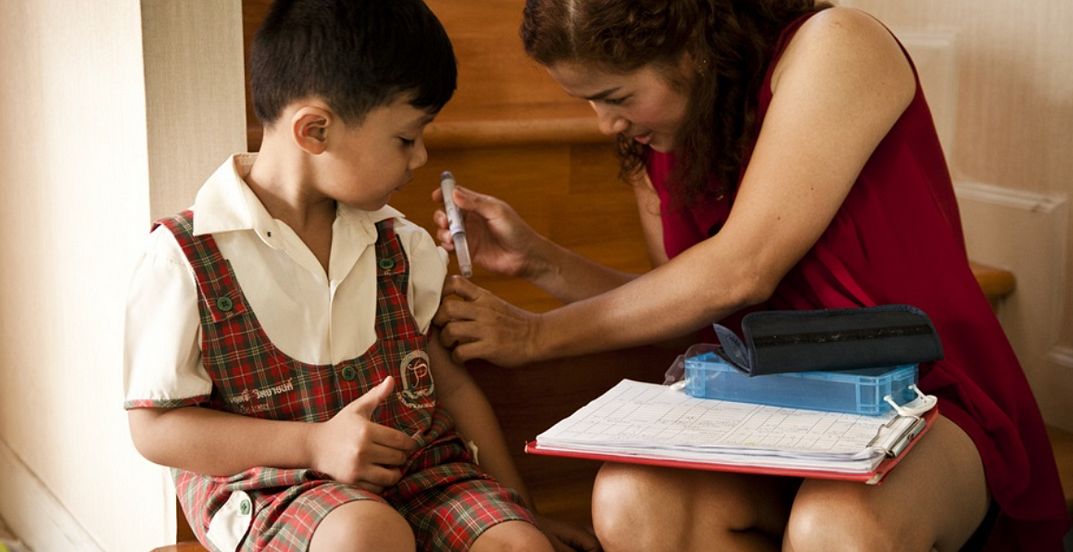
BOX
New boost to the fight against diabetes
With 2021 marking the 100 th anniversary of the discovery of insulin, WHO launched a Global Diabetes Compact to speed up action on the prevention and treatment of diabetes.
Bringing together people living with diabetes, academia, civil society, the business community and more, the Compact aims to reduce the risk of diabetes and ensure that all people diagnosed with the condition have access to affordable, good quality care.
A new report published in November highlighted that insulin, a life-saving diabetes medicine, remains out of reach for a high proportion of the people who need it. WHO is working on a number of fronts to increase access to insulin and related products, with the priority to ensure uninterrupted production and supply of human insulin. The inclusion of insulin analogues on WHO’s Essential List of Medicines opens the door to their prequalification, which could increase competition and potentially reduce prices.
Our work on diabetes is just one part of our comprehensive efforts on noncommunicable diseases (NCDs) and mental health. This is no small undertaking, given that NCDs claim the lives of 41 million people each year, equivalent to 71% of all deaths globally; depression alone constitutes a leading cause of disability worldwide.
BOX
Tobacco use fell
As to fateful choices for health and preventing NCDs, impressive numbers of people are deciding to stop smoking. Between 2000 and 2020, the number of people using tobacco dropped by 69 million — from around one third of the global population to under a quarter.
Two years ago, only 32 countries were on track to lower tobacco use by 30% between 2010 and 2025. Now, 60 countries are on course to achieve the target reduction.
Progress is fragile however, with the tobacco industry having exploited the COVID-19 pandemic to build influence with governments in many countries. The Conference of the Parties (COP9) to the WHO Framework Convention on Tobacco Control (FCTC) endorsed a declaration on recovery from the COVID-19 pandemic and also established a funding mechanism to strengthen global tobacco control measures.
Tobacco users who would like to quit can draw on resources shared via WHO’s Commit to Quit campaign, including the ‘Quitters’ Diaries’, charting personal journeys in stepping away from tobacco.
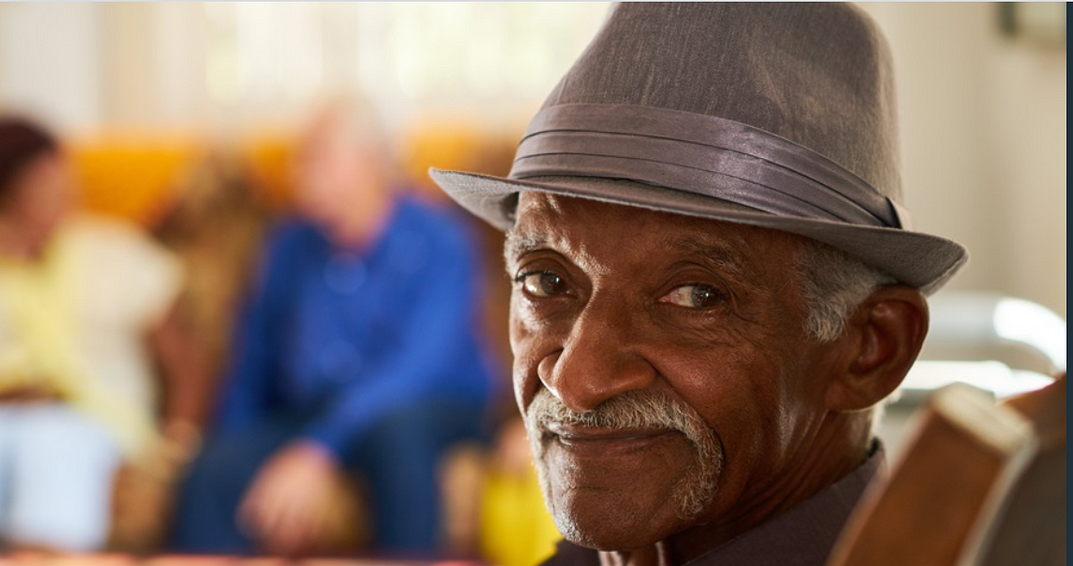
BOX
WHO signals alarm about dementia challenge
Individuals can do a lot themselves to stay healthy but they can’t do it all on their own. WHO released its first report on the global status of the public health response to dementia, showing that only a quarter of countries worldwide have a national policy, strategy or plan for supporting people with dementia and their families.
These gaps are increasingly concerning, as the number of people living with dementia is growing. WHO estimates that more than 55 million people (8.1% of women and 5.4% of men over 65 years) are living with dementia. As life expectancy increases worldwide, this number is estimated to rise to 78 million by 2030 and to 139 million by 2050.
To drive change, the report highlights the urgent need to strengthen support at national level, for both people with dementia and those who care for them. Many countries lack earmarked funding in national health budgets, leaving significant gaps in treatment and care, and do not comprehensively involve people with dementia and their carers and families in developing policies. These are among the areas for change.
WHO is also developing a Dementia Research Blueprint, to structure research efforts and stimulate new initiatives, helping to overcome challenges related to past unsuccessful clinical trials for treatments and the high costs of research and development.
Originally published at https://www.who.int.
TAGS: Retrospective of the year; Pandemic Response Strategies; Pandemic Response Assessment; Workforce Health; Dementia; Vaccine Inequity; Climate change; who; Vaccines (Malaria); Diabetes; Tobacco












